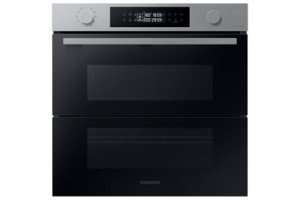The 3 Greatest Moments In Fitted Ovens And Hobs History

Fitted Ovens and Hobs: An In-Depth Guide to Modern Cooking Appliances
Fitted ovens and hobs have ended up being a staple in modern kitchen areas, combining performance, aesthetic appeals, and innovative technology. These kitchen appliances are created to seamlessly integrate into kitchen surfaces, supplying the cooking lover with the tools needed for effective meal preparation while keeping a smooth and organized look. In this post, we will check out the various kinds of fitted ovens and hobs, their benefits, elements to consider when choosing them, and responses to frequently asked questions.
Understanding Fitted Ovens and Hobs
Fitted ovens and hobs are appliances specifically created to be built into kitchen cabinetry or counter tops for a smooth appearance. They can vary significantly in style, size, performance, and features, which deal with varied cooking needs and kitchen designs.
Kinds Of Fitted Ovens
- Built-in Ovens: These ovens are set up straight into a wall or kitchen system and can be found in numerous configurations and sizes.
- Double Ovens: A built-in variation that includes 2 separate oven compartments, permitting multiple meals to be cooked at differing temperature levels simultaneously.
- Mix Ovens: These versatile appliances integrate traditional baking with microwave innovation.
- Steam Ovens: Ovens that use steam for cooking, maintaining wetness in food while improving tastes and nutrients.
- Single Ovens: A basic oven unit that is the most typical type used in homes.
Kinds of Hobs
- Gas Hobs: These use gas burners for cooking, using immediate heat and accurate temperature control.
- Electric Hobs: Powered by electrical energy, these hobs often feature smooth surface areas that make them simple to clean.
- Induction Hobs: Utilizing electromagnetic energy, induction hobs heat cookware directly instead of the hob surface, making them energy efficient and a safe choice.
- Mixed Hobs: These use both gas and electric choices, supplying flexibility for cooking designs.
Benefits of Fitted Ovens and Hobs
Fitted ovens and hobs use various benefits that improve the cooking experience:
- Space Efficiency: Designed to fit into cabinets, fitted appliances take up less area compared to standalone models, developing a structured kitchen layout.
- Aesthetics: Fitted designs often create a more cohesive and visually enticing kitchen design.
- Customization: Homeowners can select from a variety of styles, finishes, and includes to match their kitchen design and cooking needs.
- Improved Functionality: Many contemporary fitted ovens and hobs boast advanced technology, such as smart controls, self-cleaning features, and exact temperature settings, which streamline cooking.
- Security Features: Many hobs, especially induction models, have safety features such as automobile shut-off and child locks, promoting a safer cooking environment.
Factors to Consider When Choosing Fitted Ovens and Hobs
When selecting fitted appliances for a kitchen, a number of aspects should be considered to make sure the best choice:
- Cooking Style: Different appliances deal with different cooking habits. Home cooks should evaluate their typical meal preparation techniques to find suitable appliances.
- Area and Layout: Measure the available area in the kitchen to make sure that the picked appliances fit neatly without impeding motion.
- Energy Efficiency: Choose appliances with energy-efficient ratings to minimize utility costs and ecological impact.
- Innovation and Features: Consider the wanted features, such as wise innovation, self-cleaning modes, or particular cooking functions like steam or convection cooking.
- Budget: Determine a budget before making selections to ensure that the picked models line up with monetary planning.
Table: Comparison of Different Types of Ovens and Hobs
| Device Type | Pros | Cons |
|---|---|---|
| Built-in Ovens | Space-saving, personalized design | Installation expense can be high |
| Double Ovens | Cook several meals at different temps | Takes up more area |
| Steam Ovens | Healthy cooking, maintains nutrients | Typically higher cost |
| Gas Hobs | Quick heat control, chosen by chefs | Needs a gas line setup |
| Induction Hobs | Quick cooking, energy-efficient, safe | Needs suitable cookware |
| Electric Hobs | Easy to clean, steady cooking temperatures | Heating times can be slower |
Regularly Asked Questions (FAQs)
1. What is the difference in between a built-in oven and a freestanding oven?
A built-in oven is integrated into kitchen cabinetry for a smooth appearance, while a freestanding oven stands alone and is often more noticeable and available.
2. Are induction hobs safe to use?
Yes, induction hobs are considered safe as they only generate heat when compatible pots and pans is put on them, minimizing the threat of burns.
3. Can I set up a fitted oven myself?
While some individuals might choose to set up fitted ovens themselves, it is usually recommended to employ a professional to ensure right setup and adherence to security requirements.
4. What size of oven is perfect for a little kitchen?
In little cooking areas, consider compact or single built-in ovens that fit within the available area without jeopardizing on cooking functionality.
5. Do fitted ovens and hobs need unique upkeep?
Fitted appliances require standard upkeep, such as cleaning and periodic checks. However, specific upkeep tasks depend on the type of oven or hob.
In conclusion, fitted ovens and hobs represent the epitome of modern-day kitchen design and functionality. By understanding their types, benefits, and factors to consider, consumers can make educated options that boost their cooking experiences while fitting effortlessly into their home. Whether developing integrated oven sale or preparing family suppers, fitted ovens and hobs are important tools in any cooking area.

